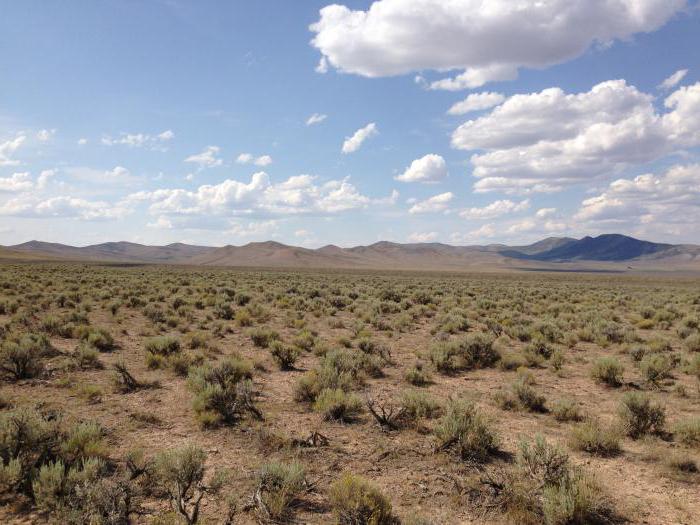After analyzing the observations of weather conditions and their seasonal changes, scientists identified the climatic zones of Eurasia. On the territory of the mainland, all their diversity is represented. Each belt is divided into separate regions with special climatic conditions.
If you bring together the climatic zones of Eurasia, the table will turn out in the form of branches. This is due to the fact that in each of them there are smaller zones, which are also fragmented.
Arctic belt
The characteristic of climatic zones of Eurasia begins with the Arctic. Its zone includes islands located far to the north of the continent, and a small continental strip in the Asian part, which borders the Arctic Ocean.
- The Arctic marine climate is located in the European sector of the Arctic Ocean. It includes Svalbard and other small islands. They are influenced by the warm current from the North Atlantic, which leads to mild winters with temperatures from -16 to -20 ºC. Up to 300 mm of precipitation falls annually.
- The continental Arctic climate is characterized by cold, dry air currents. Under their action, the entire ocean is under the ice crust all year round, with the exception of coastal waters. From the territory in which this climate dominates, cold air flows move southward.
Subarctic belt
It stretches along a narrow strip along the mainland. The cold climatic zone of Eurasia includes about. Iceland and the northern part of the Scandinavian Peninsula. To the east of the continent, the zone expands, approaching the Bering Strait. The belt is located between the borders of the Arctic front in summer and winter. In the warm season, moderate air currents affect it, and in the cold - arctic. The belt is divided into two regions: continental and marine. The latter captures Iceland and part of the islands west of Scandinavia. Precipitation falls in the amount of 300-700 mm per year in the form of snow and rain. The climate is characterized by warm winters (-5 and -10 ºC) and cold summers (up to +10 ºC).
Temperate zone
The temperate climatic zone of Eurasia has a border extending from the southern coast of the Bay of Biscay and crossing the Black and Caspian Seas. It stretches to the northern part of the peninsula of Korea and the middle of about. Honshu.
On the territory of this zone, temperate winds prevail year-round. The bulk of Eurasia within the belt is influenced by the following climates:
- Moderate continental: under his authority is the entire Russian Plain.
- Continental: Siberia, Central and Central Asia.
- Monsoon was formed in northeast China, on the Korean Peninsula, about. Hokkaido and the northern part of about. Honshu.
In winter, the area is dominated by dry, frosty air coming from the baric center in Central Asia. In summer, air masses are warm with a high moisture content, falling into this region with the Pacific monsoon. In summer, more than half of the annual rainfall falls. Winter is frosty and summer is sultry.
The temperate climatic zone in Western Europe is divided into 2 subregions: northern and southern.
Northern subregion
The area includes Fennoscandia and Scotland. It is characterized by a temperate climate with cold summers. The subregion is divided into 2 regions:
- Marine - Norwegian type of climate in the western part of the Scandinavian Peninsula and the north of Great Britain. Summer is cool and short-lived. There is a lot of rain and snow. The weather is almost always cloudy, damp with constant winds.
- Continental - the Swedish type of climate in the territory of the same country and Finland. The cold season is frosty in the area. Snow cover is forming. The summer period is short, cool and rainy. On the flat peaks of the mountains of Scandinavia, a cool climate with high humidity and average summer temperatures of no more than + 10 ºC has formed.
Southern subregion
It includes the following climatic regions:
- Marine formed in European countries adjacent to the Atlantic Ocean. It is characterized by mild winters without negative average temperatures. The summer period is moderately warm. The winds in the area are strong and often blow, heavy rains.
- Transitional from maritime to continental. In winter, a snow cover forms, which does not lie for long. Within 2-3 months, average temperatures are below zero. Summer is hotter and wetter. Spring and autumn are distinct. A climate has formed in the eastern part of the German-Polish lowland.
- Continental is located on the plains near the Danube. In summer, temperatures reach + 22-24 ºC. Precipitation falls a little. In winter, frosty winds from the east and north, causing a rapid decrease in temperature, are frequent guests.
- Hercynian highlands. Humidity in this area is high, compared with the plains located at the foot. The western slopes rain more abundantly than the eastern ones. Temperatures in the mountains are lower, and snow cover lasts for 3-5 months.
- Alpine is characterized by increased humidity, mountain peaks with lower temperatures, snow cover and glaciers.

Subtropical belt
The subtropical climatic zone of Eurasia runs across the entire continent from one ocean to another. In his power is the entire southern part of the Old World, the highlands of Western Asia up to 30º C. sh., northern part of the Arabian Peninsula, Tibet and the river basin. Yangtze. A characteristic feature is that in summer the air is dry and hot, and in winter moist and warm.
The climatic zones of Eurasia are divided into smaller sections with special conditions. Their size depends primarily on the topography and proximity of large water bodies. In the subtropical zone, the following climatic zones are distinguished:
- The Mediterranean Sea was formed on some peninsulas (Apennines, Balkans) from the sea and is distinguished by sultry summers and mild winters.
- Continental Mediterranean is located in the European part of the Mediterranean countries, the western and southern coast of Asia Minor. In weather conditions, it is similar to the previous one. Winter temperatures in different areas range from +2 to +12 ºC. About 500-600 mm of precipitation falls in the flat areas per year, and up to 3000 mm in the mountainous areas.
- Continental. There is little precipitation: 100-400 mm per year, the main part falls on the autumn-winter period. Formed in the highlands of Western Asia, in the north of the Arabian Peninsula. During the year, temperature fluctuations reach 90º.
- The alpine sub-region is located in the Tibet region. In winter there is little snow, summers are dry and cold. Only east of Tibet is rich in precipitation, which is supplied with monsoon moisture from the Pacific Ocean. Here, dry and cool air is fixed year-round.
- Monsoon. The eastern part of the Yangtze has a humid climate. Monsoon from the Pacific Ocean rains in the summer, when they fall ¾ annual rate. Fronts contribute to precipitation in the cold season. Depending on the terrain, their number per year ranges from 700 to 2000 mm.

Tropical belt
Mainland Eurasia climatic zones has various, including tropical trade winds. It includes: Thar desert, the south of the Arabian Peninsula and the southern part of the Iranian highlands. Tropical air masses dominate throughout the seasons. In summer, the heat, winter is warm. High temperature drops during the day. There is a lack of precipitation in the area, for the most part their annual amount does not exceed 100 mm. The exception is the Yemen mountains, where they fall 400-1000 mm.
Subequatorial belt
It was formed on the territory of about. Ceylon, the peninsulas of Hindustan and Indochina, southern China and several other islands. In winter, dry air masses come from the continent, and in summer - wet from the Indian Ocean. Spring is the hottest time. The winter-spring period is very dry, and the summer-autumn period is wet.
If we compare the climatic zones of Eurasia, the subequatorial belt has very contrasting semesters. Dry and wet periods alternate throughout the year.
Brief description of climatic zones of Eurasia| Climate belt | Air preference | Description |
| Arctic | Arctic | Dry and cold |
| Subarctic | Arctic in winter, temperate in summer | Winter is cold and dry, summer wet and moderately warm |
| Moderate | Moderate | Season dependent |
| Subtropical | Temperate in winter, tropical in summer | Winter is humid and moderately warm; summer is dry and warm |
| Tropical | Tropical | Warm and dry |
| Subequatorial | Winter tropical, summer equatorial | Winter is warm and dry, summer is warm and humid. |
| Equatorial | Equatorial | Warm and humid |
Equatorial belt
If you combine the climatic zones of Eurasia, the table will be very bloated due to their number. The equatorial belt is the southernmost region of the continent. It formed on most of the islands and peninsulas at the equator. Precipitation throughout the year is evenly distributed with 2 peak periods.
Other climatic zones of Eurasia do not have such high average annual temperatures as this. The amount of precipitation is 1500-4000 mm per year.